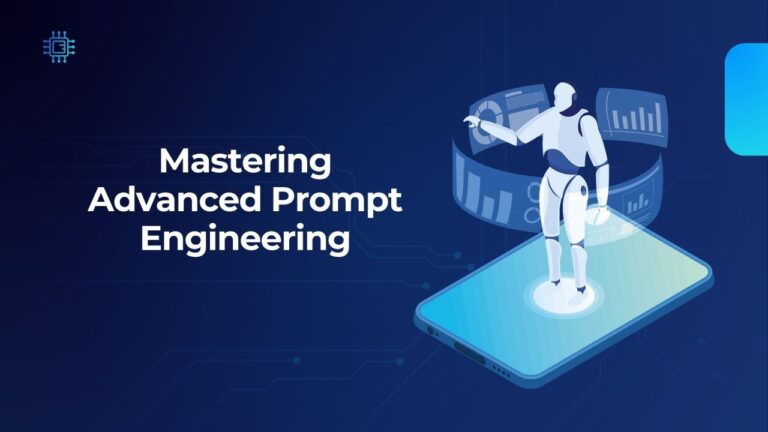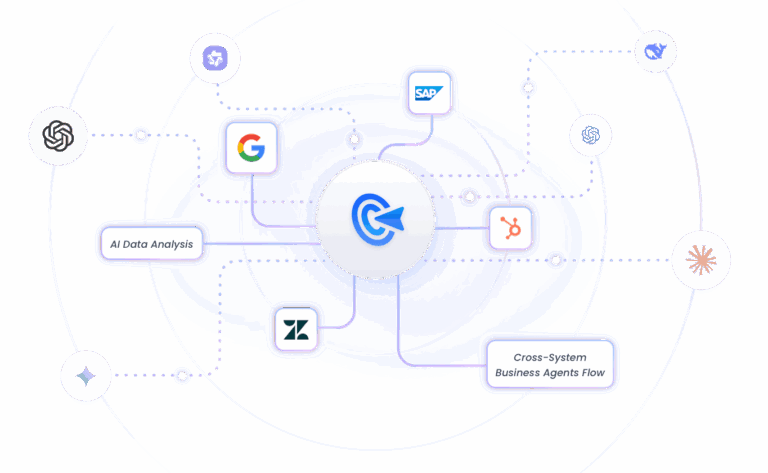- Why Advanced Prompt Engineering Matters
- From Static to Systemic: The Evolution of Prompting
- 5 Advanced Techniques Every AI Engineer Should Know
- 1. Prompt Chaining
- 2. Self-Refinement and Self-Critique Loops
- 3. Dynamic Context Injection
- 4. Meta-Prompting and Auto-Prompt Generation
- 5. Prompt Evaluation, Testing, and Versioning
- Putting It All Together: Building Adaptive Prompt Workflows
- Common Pitfalls (and How to Avoid Them)
- The Future: From Prompt Engineering to Agentic Systems
- Conclusion
Advanced prompt engineering is about systemic design—not longer or fancier prompts, but structured, adaptive, and testable workflows that make large language models (LLMs) more reliable, auditable, and scalable.
This article covers advanced techniques like prompt chaining, self-refinement, dynamic context injection, and meta-prompting, along with practical methods to evaluate and automate your prompt systems.
Why Advanced Prompt Engineering Matters

Most teams today know the basics of prompt engineering: write clear instructions, use examples, and set role or tone. Those “best practices” are a solid foundation—but once you move from a prototype or demo into production-scale LLM applications, you’ll quickly hit the next wall:
- Outputs become inconsistent as prompts grow.
- Contexts exceed token limits.
- Prompts drift over time, losing accuracy.
- Teams struggle to track and version changes.
Advanced prompt engineering is how you engineer around these limitations. It treats prompts not as isolated text commands but as architectural components—composable, testable, and adaptable parts of a larger system.
From Static to Systemic: The Evolution of Prompting
Let’s look at how prompt engineering has evolved:
| Phase | Description | Example Use |
|---|---|---|
| Static Prompting | One-shot input and response | “Summarize this document.” |
| Dynamic Prompting | Prompts adapt using templates, user context, or metadata | “Summarize this document in 3 bullet points for executives.” |
| Agentic Prompting | Multiple prompts cooperate or self-adjust based on feedback and goals | “Review the report, generate insights, and prepare follow-up questions.” |
At this advanced stage, you’re no longer crafting one perfect prompt—you’re designing a prompt workflow that evolves based on data, feedback, or the system’s state.
5 Advanced Techniques Every AI Engineer Should Know
1. Prompt Chaining — Structure Complex Reasoning
Prompt chaining means decomposing a complex goal into smaller, linked steps. Each step feeds its result into the next, forming a reasoning pipeline.
Example:
You want to analyze customer complaints and recommend fixes. Instead of one long prompt, build a chain:
1. Extract key facts (names, issue types, context).
2. Categorize sentiment and severity.
3. Generate a root cause hypothesis.
4. Suggest specific fixes with confidence scores.
Benefits:
- Easier debugging and evaluation per stage.
- Modular reuse of sub-prompts.
- Supports multi-agent collaboration.
2. Self-Refinement and Self-Critique Loops
LLMs can critique and improve their own outputs. This method—sometimes called self-reflection or reflexive prompting—creates an internal feedback loop that refines quality.
Example pattern:
1. Model A generates an output.
2. Model B (or the same model with a critic prompt) evaluates accuracy, tone, or coverage.
3. Model A revises based on that feedback.
You can repeat this loop until a confidence threshold is met or diminishing returns occur.
Use cases:
- Long-form text quality improvement.
- Reducing hallucinations in factual responses.
- Converting unstructured data into validated outputs.
3. Dynamic Context Injection (RAG + Memory Integration)
One of the biggest leaps in advanced prompting comes from context modularization—fetching and injecting relevant knowledge dynamically instead of hardcoding it into prompts.
This pattern is often implemented through Retrieval-Augmented Generation (RAG) or knowledge-base integration:
- Retrieve top-N relevant documents or facts.
- Condense or re-rank them.
- Inject into the prompt as contextual memory.
Why it matters:
- Reduces token waste and keeps prompts concise.
- Ensures factual grounding with up-to-date information.
- Enables personalized outputs for each user or workflow.
In enterprise environments, dynamic context is essential for compliance, traceability, and domain-specific accuracy—whether you’re summarizing policy documents or running automated support workflows.
4. Meta-Prompting and Auto-Prompt Generation
Meta-prompting means writing prompts that generate other prompts. This allows systems to dynamically create task-specific instructions based on context, user goals, or prior failures.
Example use cases:
- Automated prompt generation for multiple domains (marketing, finance, legal).
- Adaptive systems that rewrite prompts when performance drops.
- AI agents that teach themselves better instructions.
A typical pattern:
“You are a meta-prompt generator. Given a user request and context, write the most effective task-specific prompt for an LLM to accomplish it.”
This method enables scalability—one system can automatically create hundreds of optimized prompts, each tuned for a different function or data source.
5. Prompt Evaluation, Testing, and Versioning
In advanced setups, prompts are treated like software artifacts: they have versions, tests, and metrics. This ensures reliability and accountability across teams.
Core practices:
- Version Control: Store every prompt iteration with metadata (model, use case, performance).
- Automated Testing: Use “gold standard” inputs and outputs to measure accuracy, consistency, and tone.
- A/B Evaluation: Deploy multiple prompt variants in production and track user feedback or performance metrics.
- LLM-as-Judge: Use a neutral model to score outputs along specific criteria (clarity, correctness, relevance).
Result: measurable prompt performance over time, reduced drift, and higher confidence in deployment.
Putting It All Together: Building Adaptive Prompt Workflows
Advanced prompt engineering techniques shine when combined into workflow architectures. Here’s a simplified blueprint:
1. Input Understanding — classify intent, context, and domain.
2. Prompt Generation — dynamically craft or fetch templates.
3. RAG Integration — inject current knowledge and policies.
4. Execution Chain — run multi-step reasoning prompts.
5. Self-Refinement — evaluate and improve results.
6. Logging & Evaluation — version and score the prompt.
Each block can be monitored, tested, and replaced without breaking the system. That modularity is what allows organizations to scale from single-use experiments to enterprise-grade LLM pipelines.
Common Pitfalls (and How to Avoid Them)
| Pitfall | Why it happens | Solution |
|---|---|---|
| Prompt bloat | Adding too much context or redundant examples | Use retrieval filters and focus on essential data |
| Context drift | Outdated facts or domain changes | Re-run retrieval jobs periodically and version contexts |
| Lack of evaluation | No systematic feedback on prompt quality | Implement prompt testing and scoring pipelines |
| Overfitting examples | Reusing too-similar examples reduces generalization | Diversify test cases across domains |
| Human bottlenecks | Manual prompt updates at scale | Adopt meta-prompting or workflow-based automation |
The Future: From Prompt Engineering to Agentic Systems
As prompt engineering evolves, its ultimate destination lies in agentic systems. AI that not only understands prompts but autonomously plans, reasons, and executes. Instead of manually crafting increasingly complex prompts, future systems will generate, refine, and chain their own instructions to achieve higher-level goals.
This is where GoInsight.AI represents the next leap. Rather than treating prompts as static inputs, GoInsight enables agentic workflows — where prompts, memory, and tools are dynamically orchestrated into intelligent, end-to-end operations. Its visual workflow engine and multi-agent architecture empower enterprises to move beyond prompt design into autonomous, governed AI systems that adapt, learn, and act with context.

Key features that make GoInsight.AI stand out:
- Visual Intelligent Workflow Engine: Design complex AI processes through an intuitive drag-and-drop interface.
- Multi-Agent Collaboration: Coordinate multiple AI agents to handle dynamic, cross-functional tasks seamlessly.
- Integrated Knowledge & RAG: Maintain contextual awareness and factual accuracy across workflows.
- Security & Compliance Layer: Ensure every AI interaction remains auditable, governed, and enterprise-safe.
- Human-in-the-Loop Automation: Blend autonomous AI actions with real-time human oversight for reliable execution.
In essence, while prompt engineering focuses on “how to talk to AI,” platforms like GoInsight.AI focus on “how AI talks, thinks, and collaborates” — marking the shift from crafting prompts to building intelligent ecosystems.
Conclusion
Advanced prompt engineering isn’t about writing longer prompts—it’s about designing smarter systems.
By mastering techniques like chaining, self-refinement, dynamic context, meta-prompting, and evaluation, you can transform LLMs from clever assistants into reliable, evolving components of your business processes.
If you’re already experimenting with prompt frameworks, start thinking in terms of workflows, agents, and feedback loops. That’s where the next leap in AI usability and reliability is happening.






Leave a Reply.